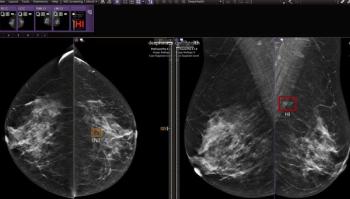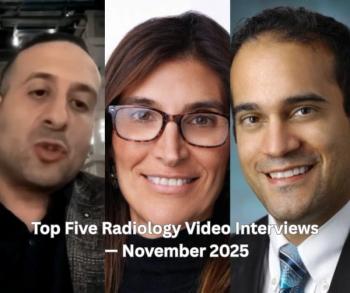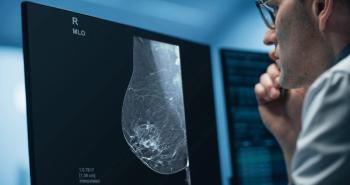
Breast Density Alone Not Strong Risk Factor for Cancer
CHICAGO-Challenging breast density as a strong risk factor for cancer.
Breast density alone is not a strong independent risk factor for breast cancer, according to a study presented at the annual meeting of the Radiological Society of North America (RSNA).
Researchers from Croatia evaluated the association of high mammographic density and breast cancer using data from 52,962 mammograms obtained through the National Breast Screening Programme. The program screens women aged 50 to 69 every two years. The researchers performed density analysis from one craniocaudal and one mediolateral view of both breasts.
American College of Radiology (ACR) criteria for breast density has four groups:
1. Almost entirely fatty
2. Scattered fibro-glandular densities
3. Heterogeneously dense
4. Extremely dense
When carcinoma was detected, the woman was matched to a control.
The results showed 230 detected breast cancers:
Following ACR criteria:
There was no significant difference in mammographic density between the women with cancer and the controls. Women with low mammographic density made up 83% of the patients in the breast cancer group, compared with 89% in the control group, while high mammographic density was found in 17% of the breast cancer patients and 11% of women in the control group.
"In our study, we found that there was no significant difference in breast density between breast cancer patients and the control group in the screening program," Natasa Katavic, MD, Department of Radiology at Health Center Osijek in Osijek, said in a release. .
"Our study suggests that breast density alone might not be a strong independent risk factor for breast cancer," she noted. "In risk assessment, all risk factors should be considered before decisions on additional examinations."
[[{"type":"media","view_mode":"media_crop","fid":"43736","attributes":{"alt":"","class":"media-image media-image-right","id":"media_crop_6867033855809","media_crop_h":"0","media_crop_image_style":"-1","media_crop_instance":"4824","media_crop_rotate":"0","media_crop_scale_h":"0","media_crop_scale_w":"0","media_crop_w":"0","media_crop_x":"0","media_crop_y":"0","style":"float: right;","title":" Four different categories of breast density: fatty (top left), scattered fibroglandular (top right), heterogeneously dense (bottom left) and extremely dense (bottom right). ©RSNA 2015.","typeof":"foaf:Image"}}]]
Newsletter
Stay at the forefront of radiology with the Diagnostic Imaging newsletter, delivering the latest news, clinical insights, and imaging advancements for today’s radiologists.



























